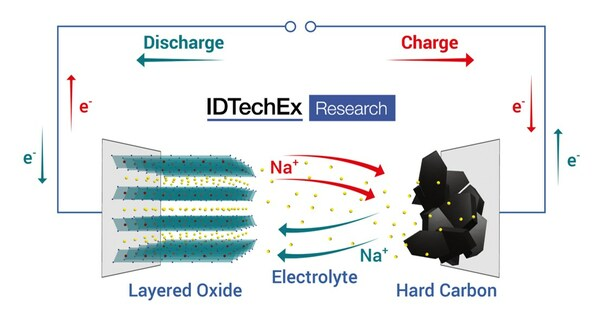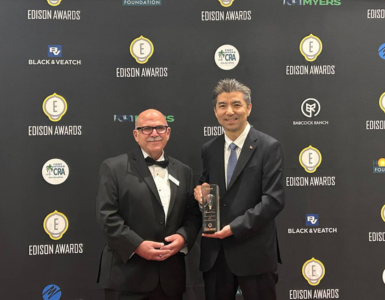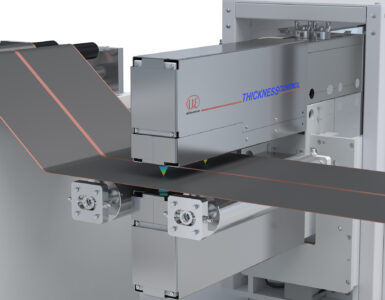The attraction of na-ion battery cehmistry lies in its composition rather than its performance, finds IDTechEx.
Na-ion is probably the most prominent metal-ion battery chemistry outside of Li-ion, working via the same ‘rocking chair’ (where the alkali-ion shuttles from a non-metal anode to a cathode during discharge and vice versa during charge) principle of reversible cation intercalation, at a positive and negative electrode.
Materials can also be similar to Li-ion, with metal oxides often used as the cathode and carbon-based materials as the anode. However, the carbon cannot be in the form of graphite as the size of Na+ is too large for intercalation, and in reality, material choices may differ significantly compared to Li-ion chemistries.
Diversified Cathode Approach
🔥 What about we co-host a webinar? Let's educate, captivate, and convert the battery economy!
Batteries News is the global go-to online magazine for the battery industry, we can help you host impactful webinars that become a global reference on your topic and are an evergreen source of leads. Click here to request more details
The three main families of cathode materials are the layered metal-oxides, polyanionic compounds, and Prussian blue analogs (PBA). Transition metal layered oxides have two-dimensional layered structures that allow reversible sodium insertion.
The great advantage of these compounds lies in their low molecular weight, which results in a high theoretical specific capacity. However, in addition to having a moderate redox potential, they undergo multiple phase transitions during the deinsertion/insertion of sodium ions – resulting in structural instability during charge/discharge, especially at high voltages, leading to low cyclability.
Thanks to their high stability and fast ionic mobility within their structural framework, polyanionic materials are intensively studied as promising cathode materials for Na-ion batteries. Although these materials generally have lower capacity than the layered oxides (typically due to their higher molecular weight) and low electronic conductivity, they are considered very attractive due to their higher voltage and structural stability.
The third family of interest is Prussian blue analogs (PBAs). They have a 3D structure with large channels through which sodium ions can diffuse rapidly. In addition, they are formed by abundant, cheap, and non-toxic elements. The added advantage of PBAs is the simplicity of synthesis: Their main disadvantage is their low density, which leads to a low volumetric energy density compared to layered oxides.
Like Li-ion batteries, each family of cathode materials has its advantages and disadvantages (such as in terms of electrochemical performance, sustainability, cost, etc.). Considering this scenario, there is no single winning chemistry. It is more likely that several Na cathodes would coexist in order to fulfill the broad requirements resulting from the wide market for different applications.
The IDTechEx report, “Sodium-ion Batteries 2023-2033: Technology, Players, Markets, and Forecasts“, covers the industrial developments in the Na-ion battery market and provides patent analysis into key player chemistries.
Are Na-Ion Batteries Truly Sustainable?
One of the key value propositions of the Na-ion battery is that it uses sustainable materials. Sodium is widely available, and problematic materials such as cobalt can be avoided.
While cathode materials are less likely to make use of cobalt, they can still make use of relatively expensive materials such as vanadium. Compared to Li-ion, Na-ion can be marketed as more sustainable due to the use of sodium over lithium – this would be an oversimplification, given that lithium makes up only a small percentage of a Li-ion cell.
Na-ion cells can and do make use of low-cost materials in their electrodes, but this can also be true for Li-ion with LFP or manganese-based cathodes. The possibility of using aluminum as both the negative and positive current collector has the potential to provide cost savings. Electrode material choices are also key in this regard, as both expensive and cheap materials can be used.
An opportunity does exist from a potential shortage of lithium supply in the medium term, given the lack of necessary investment into raw material extraction.
While there is sufficient lithium resource to meet forecast demand from Li-ion before accounting for recycling, the capacity to mine this lithium has not grown at the necessary rate, offering an opportunity for alternative chemistries (e.g., Na-ion) in the medium and long term. The IDTechEx report on Na-ion batteries forecasts the growth in demand for Na-ion batteries in applications like stationary energy storage and Micro EVs.
Chemistries Used in Commercial Na-Ion Cells Are Optimised for Certain Applications
While Na-ion technology is still in its early research and development phase, companies such as Tiamat (using polyanionic chemistry), Faradion (using layered oxide chemistry), and Natron (using PBA chemistry) have been offering commercial products that provide momentum for Na-ion technology in hybrid EVs, stationary storage, and data center backup power as market applications respectively.
By doing so, they are demonstrating the chances of success and, more so, highlighting market sectors where Na-ion could be the winning technology. The IDTechEx report, “Sodium-ion Batteries 2023-2033: Technology, Players, Markets, and Forecasts“, includes their company profiles, along with several other battery makers pursuing Na-ion as an option.
To find out more about this IDTechEx report, including downloadable sample pages, please visit www.IDTechEx.com/Sodium.
About IDTechEx
IDTechEx guides your strategic business decisions through its Research, Subscription and Consultancy products, helping you profit from emerging technologies. For more information, contact research@IDTechEx.com or visit www.IDTechEx.com.
READ the latest Batteries News shaping the battery market
The Attraction of Na-Ion Lies in Its Composition Rather Than Its Performance, Finds IDTechEx, BOSTON, May 31, 2023







